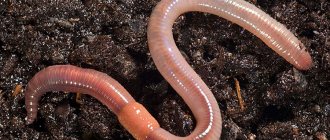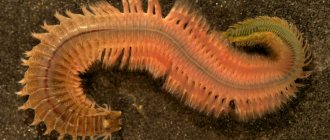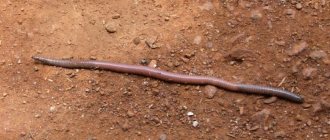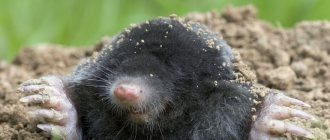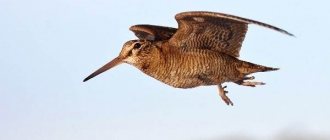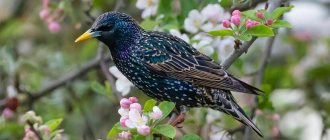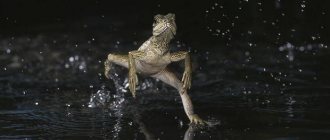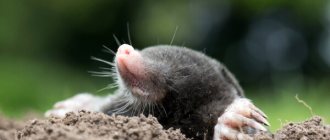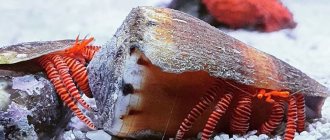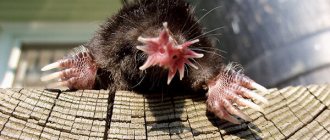The red earthworm has a worm-shaped body divided by rings. Animals have a skin-type respiratory system, so they tend to be nocturnal. At night, atmospheric humidity increases, which is necessary for earthworms to maintain moist skin. Earthworms, which reproduce throughout the year, if favorable conditions exist for this (excess moisture and food), are hermaphrodites, that is, bisexual, and therefore are able to fertilize and at the same time be fertilized.
However, one individual is not able to fertilize itself; it needs a mate . The mating process lasts about three hours, and as a result, from 3 to 20 young individuals appear. Each invertebrate lives on average four years, so it's easy to see why they can reproduce quickly.
Main method of reproduction
But, nevertheless, in order for a worm to reproduce, as a rule, it usually needs a second individual, i.e. pair. The reproductive organs of worms are located on the abdomen near the head.
One of the key roles in the exchange of germ cells is played by a small thickening on the worm’s body called the girdle. During mating, these thickenings are located nearby, and a dense mucous liquid appears that covers the bodies of the worms like a coupling.
The liquid in which the sex cells are located enters this coupling through small holes, and an exchange occurs. After mating, the individuals disperse. The liquid containing the germ cells is stored in the girdle for a couple of days.
This time is enough for the seminal fluid to mature. Next, mucus similar to a cocoon begins to secrete from the girdle. The worm removes it from its own body, slipping out of it. The belt remains in the soil, and the eggs end up in the mucus.
Process of mating and reproduction
This is the last stage of fertilization. From the testicles remaining in the cocoon, tiny rainflies subsequently appear, completely similar to adult individuals. Such cocoons are formed approximately once every seven days. They are similar in appearance to lemons, but much smaller, about 3 mm.
The color of the cocoons is yellowish, and with mature eggs it is brown. There are few eggs in such an earthworm cocoon, from two to twenty. Their development lasts approximately twenty days.
Young worms are very thin, like threads, about 5 mm long, but they grow quite quickly, feed on their own and are soon ready.
The benefits of raising earthworms
The red earthworm is actively used in worm breeding culture.
- It is an important food for feeding reptiles , amphibians and fish, and is a good source of vitamins A and E and minerals;
- Worm culture, in addition to providing food for our animals, is also useful for obtaining humus, which is an ideal substrate for plants because it is rich in nitrogen, potassium and calcium;
- In addition, these invertebrates are of great benefit as a cheap means of processing garbage and human waste, which is of great environmental interest;
- Finally, invertebrates are used as live bait for fishing .
Regenerative propagation
The worm’s ability to regenerate is also amazing. When cutting one individual, each half can grow back the missing part. But it is worth noting that the rear tip grows quite quickly, but the head part grows less frequently and takes longer.
As a result of these abilities, raincoats have spread almost throughout the globe, making the soil fertile while providing food for many animals.
Their unpretentiousness in food and excellent adaptability to living conditions allow them to reproduce well.
Alternative ways to survive
If a situation suddenly arises when a species is threatened with complete extermination, earthworms have backup options that help them survive in the most difficult conditions. These animals are able to reproduce without fertilization. But then there will be only one females in the population.
There are species that can reproduce asexually. If you cut such a worm, then each half will grow back the missing part.
Thanks to such amazing properties, earthworms live all over the world, except Antarctica, where the soil is hidden under many meters of ice. These animals help the soil in which they live become more fertile, and for many species of more developed animals they provide protein-rich food. Earthworms make up a significant percentage of the planet's total biomass.
Breeding worms at home
Worms are the first choice for most anglers as bait for catching fish. Small specimens are generally used for catching small fish , while larger animals such as earthworms can be used for species such as catfish, sea bass and walleye.
We also recommend reading:
Model range of Salmo wobblers and the Salmo Hornet catalog Features of crucian carp killer gear and how to make such equipment Bait for crucian carp - recipes for super bait with your own hands Spinner for pike - 10 best and how to make it yourself?
Breeding worms for fishing is not a difficult task, however, many anglers buy invertebrates in special stores the night before or the morning before going fishing. For avid fishermen, this behavior can entail large financial costs. You can save some money and improve the quality of the soil around your home by raising your own fishing worms. In addition, the question of how to breed worms is not difficult even for novice fishermen . To grow them you will need:
- container for growing and breeding worms;
- peat moss or other material for filling the container;
- water;
- means for monitoring soil temperature in a container;
- compost for animal food supply.
The following steps will show in detail how to breed and raise earthworms at home.
1 Making a container for growing worms at home
Making a container for keeping and breeding invertebrates will allow you to maintain the soil in conditions suitable for their life. You can make this container in any size you like and using different materials.
- You can make the container whatever size you want. A good solution would be a container with dimensions of 0.9-1.8 m in length, 0.6-1.2 m in width and 0.3-0.6 m in depth.
- You can place the container for animals both inside your home and outside, depending on the climate of the area. The container should be located at ground level in the shade, where it will not be exposed to high temperatures on sunny and hot days. It is not necessary to make a bottom for the container (unless, of course, it is small in size and if there is a bottom, it can be lifted and moved to another place). While the animals will receive food regularly, there will be a lower chance that they will crawl away. However, the container for breeding live bait can be covered on top with a rain cover or a metal mesh in case you live in an area where animals live (anteaters, armadillos) that could harm your structure .
- Wood is a good choice of natural material for making a container. When making a structure, you need to take into account that over time it may be necessary to replace rotten boards and so that this operation will not be difficult in the future.
- If you plan to install the container in one permanent location, then you can use concrete blocks to make its frame.
- Also, a compact metal mesh can be useful in making containers. The sides of the container, in this case, should be covered with burlap or rough canvas in order to reduce the likelihood of invertebrates spreading when the container is in the fresh air.
- If you decide not to build an actual propagation container, a simple Styrofoam box .
Population and species status
If the soil is not contaminated, then you can count from several hundred thousand to 1 million earthworms, with their weight from 100 to 1 thousand kilograms per 1 hectare of arable land. Farmers who practice vermicultivation are interested in having as many worms as possible, so they breed worms themselves, ensuring maximum fertility of their lands.
With the help of worms, the process of processing organic waste into vermicompost, which is a high-quality fertilizer, occurs. Some farmers raise invertebrates to feed their animals and poultry. To do this, they prepare composts consisting of organic waste. As far as we know, fishermen actively use worms when fishing.
Experts, having examined ordinary chernozem, found 3 varieties of earthworms in it, and one species turned out to be 42 units per square meter of uncultivated land and only 13 units on arable land. No other species was found on virgin lands, and only one specimen was found on arable lands.
The number of earthworms depends on living conditions and can vary significantly from several hundred pieces to several hundred thousand pieces per square meter.
Classification of individuals
In nature, there are about 2 thousand different earthworms, distributed throughout all countries and continents. In Europe, for example, 40 of them are found. The most important among them are common and dung worms.
The first variety is distinguished by its 30-centimeter body length and brown-red color. They are almost always found in vegetable gardens and orchards, forests and fields. Traces of their vital activity can be detected by deep (up to 3 m) narrow holes on the soil surface. They prefer to settle in areas with a high content of organic matter and an acceptable degree of moisture.
Dung worms have small dimensions (4−15 cm). The body is full, tubular, rusty colored. There are peculiar yellow stripes around the rings. Representatives of the species live on manured soils, which is why their name is associated. In addition to the presence of organic matter in the ground, for normal life they need an air temperature varying from +15 to +25C.
The structure of the genital organs
The generative organs of the annelid worm are represented by the following structures:
- egg funnels;
- testes;
- seed sacs;
- egg sacs;
- testicular capsules (in some species);
- belt;
- seminal receptacles;
- seed funnels and seed ducts.
Egg funnels are organs through which eggs pass into the egg sacs. These structures are located in the region of 13-14 segments in the abdominal part of the earthworm’s body, and belong to the female genital organs. The eggs of these individuals are spherical or rounded formations, with a transparent layer of cytoplasmic colloid. These structures are nourished by the egg cocoon.
The testes and seminal sacs belong to the male genital organs and are relatively small in size. In the testes, sperm are produced, which enter the body cavity of the body, and then into the seminal sacs. Some representatives have seed capsules. Due to the presence of seminal funnels and vas deferens, spermatozoa are brought out; the seed receptacles are located at the anterior wall of the abdominal cavity of the body and have pores and smooth muscles necessary for the advancement of the incoming seed.
The girdle refers to modified epithelial tissue. The girdle cells produce a substance that is part of the egg cocoon and its shell.
Gardening ABC's » 3 myths about earthworms
3 myths about earthworms
3 myths about earthworms.
I recently had a conversation with a summer resident from our village.
I told you that I needed to expand the flower bed. And there is grass turf, and you only have to remove it with a shovel. While working, no, no, yes, you will cut off an earthworm. It's a pity! - Don’t they multiply from this? - asked the summer resident. - No. Worms reproduce differently. - Yes?! And all my life I thought that earthworms reproduce if they are cut down. I even specially cut them to separate them. - This is a terrible misconception!!! -It seems like they explained to us in natural history lessons that this is how earthworms reproduce?.. How firmly rooted is the myth about the reproduction of earthworms by cutting, that they even refer to lessons at school! And so the experienced amateur gardener is mistaken, who in twenty years was able to turn an abandoned plot into a blooming oasis and who has a lot to learn from! That’s why I decided to write this article to talk about our most important helpers – earthworms and to dispel the myths that cause irreparable harm to them and nature. Myth No. 1.
If you cut a worm, there will be two or more of it. This, as you already understand, is a myth!
The severed part of the worm will die
and not “turn” into a new one!
Because it also has a “head” and a “tail,” but these are rather conventional names. It would be more correct to say - the front half of the body and the back half of the body. So, in most species of earthworms, only the front half of the body
.
Therefore, there can be no talk of any reproduction of earthworms by cutting them down. Worms reproduce sexually using cross-fertilization. Each adult worm has both female and male reproductive systems (i.e. earthworms are hermaphrodites). Inside each worm there is a cocoon, inside which the eggs are fertilized and develop, after which small worms emerge from the cocoon, which in turn reach the size of adult worms after 3-4 months. For moles, for example, earthworms are their favorite treat. And moles sometimes store earthworms in their pantries. They collect them, bite off their “heads” and store their “tails” (the back halves of the body) in their burrows for storage. And yet, moles do not cause as much damage to the earthworm population as a person with a shovel. Therefore, it is better to dig the ground with a pitchfork. It is, of course, impossible to do this on virgin soil. But if you already have an established garden, then try to dig it up with a pitchfork.
Myth No. 2. If you take compost with worms and throw it into the garden, then these worms will multiply in the garden soil.
This is not entirely true!
Worms get used to certain living conditions. And if the worm’s habitat was moist and nutritious compost, then finding itself in unfamiliar garden soil, the earthworm may die. The worm gets used to certain foods, and changing the menu can be disastrous for it. But it is not all that bad. Of those worms that were in the compost added to the garden beds, a small part of them will still take root in the new place. In addition, new earthworms will be born from the cocoons, which, of course, will be in the compost. And for them the garden bed will become a home. As a result, both the surviving worms and those born from the cocoons will give life to new generations that will multiply in the garden (orchard, potato plot) and will improve the fertility of the soil. So just keep this in mind when adding worm compost to your garden bed or under your flowers and trees. Myth No. 3.
Worms die in winter or during drought, and new ones are born in spring and after rain. This is also a misconception!
During the winter, worms go into suspended animation (like frogs). They go deeper into the soil and “fall asleep” there. With the arrival of warmth, they come to life and continue their life activities. The same thing happens to them during severe droughts. You've probably noticed that no matter how much you dig into the dry soil, you won't see a single earthworm. They go deep underground and there they go through difficult times in a state of suspended animation. By the way, earthworms are not at all afraid of spring floods. And they are able to wait out them for up to several weeks. Now, knowing the nature of earthworms, it is much easier to establish mutually beneficial relationships with them. And a few more tips
.
1.
Do not overuse fertilizers applied to the soil.
Their high concentration can kill earthworms. This also applies to natural mineral fertilizer – ash. It should be added to the soil no more than 1 cup per 1 m2 or per bucket (10 l) of water. 2.
Gardeners often spill contaminated soil with a solution of copper sulfate.
Of course, this will reduce the outbreak of diseases, but it will also destroy earthworms. It is better to avoid using copper sulfate on the soil. Instead, a method such as crop rotation should be used. And a solution of mustard powder (or ready-made mustard) also allows you to keep the soil healthy without harm to earthworms. 3.
Burning grass and garbage in the garden leads to the death of living organisms, including earthworms, at the site of the fire.
Just don’t forget about it when there is a need to burn garbage. 4.
The soil should be kept moist and be sure to loosen it after each watering or rain.
This improves air access to the soil and makes it soft, loose and favorable for earthworms. After loosening, you can mulch the soil. This will create better conditions for the worms. And as a result, soil fertility will increase. 5.
You should set aside a place in your garden for compost.
Place mowed grass, weeded weeds, fallen leaves, and household organic waste there. Water the compost periodically. And over time, you will end up with your own compost fertilizer, infested with earthworms. An earthworm
is an inconspicuous, quiet worker who makes the soil fertile. He is the most important friend and assistant for a gardener and gardener! We must take care of him and help him! So let's do that.
Always with you, Katerina Shlykova
Quoting and partial copying
of articles and stories is possible with the source indicated in the form of
an active link
to the corresponding page of the site.
You might also be interested in:
| How to properly plant... |
| How to care for geranium... |
| How to plant and grow... |
| Category: ABC's of gardening | Date: 05/12/2012 | |
| Views: 42747 | Comments: 1 Tags: earthworms Rating: 4.2 / 9 |
Leave a comment:
Antispam is working! Please, no advertising or links to third-party resources. About this via Feedback.
| Total comments: 1 | |
Circulatory system
All secondary cavities have a circulatory system, starting with annelids. Its occurrence is associated with a mobile lifestyle (compared to flat and protocavitary worms). The muscles of annelids work more actively and therefore require more nutrients and oxygen, which the blood brings them.
The earthworm (Fig. 52) has two main blood vessels: the dorsal, through which blood moves from the rear end of the body to the front, and the abdominal, through which blood flows in the opposite direction. Both vessels in each segment are connected by ring vessels.
Several thick annular vessels are muscular; due to their contraction, blood moves. Muscular vessels (“hearts”) located in segments 7–11 push blood into the abdominal vessel. In the “hearts” and spinal vessels, valves prevent blood from flowing back.
From the main vessels, thinner ones depart, which then branch into the smallest capillaries. These capillaries receive oxygen through the surface of the body and nutrients from the intestines. From the capillaries that branch in the muscles, carbon dioxide and decay products are released.
Blood moves all the time through the vessels and does not mix with the cavity fluid. Such a circulatory system is called closed. Blood contains hemoglobin, which is able to carry more oxygen; she is reddish.
A closed circulatory system allows you to significantly increase your metabolic rate. In annelids it is twice as high as in flatworms, which do not have a blood pumping system.
How to prepare worms for winter
At the end of October - beginning of November, the upper part of the cultivator bed, abundantly populated with worms, is transferred to the surface of the earth of a neighboring plot and, covered with a 40-50 cm layer of compost, is decorated on the sides with boards. This cultivator bed should be well protected from rodents with a metal mesh or spruce branches. An old cultivator with worms can be thoroughly soaked in water, which, when frozen, will make it inaccessible to rodents. At a temperature of 6 °C, the worms stop feeding; at 4 °C, they empty the digestive tract and enter a state of suspended animation.
With the onset of frost, the worms freeze, but this is not dangerous. With the onset of spring, worms become active and need food, so the substrate for them must be prepared in the fall. Cultivated worms are very dependent on humans and, in the absence of food, simply die.
Conditions for growth and reproduction
Since the method of reproduction of an earthworm is cross-fertilization (sexual way), special conditions must be present for its implementation:
- a sufficient amount of nutrients in the external environment;
- average acidity of the environment (6.5 – 7.5);
- air humidity is not less than 70%, but not more than 85%.
These conditions are also considered optimal for the growth of annelids.
Worm feeding
Climbing out at night, they bring half-rotted remains of leaves and plants into their burrows, which they use for food. Worms also consume humus-rich soil. Each of them processes up to 500 mg of soil per day. If we take into account that there can be up to 10 million individuals per hectare, we can conclude: representatives of this species are high-quality soil converters.
After being consumed by worms, the soil is sticky to the touch. Gradually it dries out, becomes round and decreases in volume. The earth is enriched with the following substances:
- enzymes,
- vitamins,
- organic compounds.
Thanks to the nutrition of worms, there are fewer harmful bacteria in the soil and root rot is prevented. Due to the presence of natural antiseptics on their body, the soil is disinfected.
Germ layers
The germ layers are the basis of all organs. In annelids, the ectoderm (outer layer of cells), endoderm (inner layer of cells) and mesoderm (intermediate layer of cells) appear early in development as three germ layers. They give rise to all major organ systems, including the secondary cavity and the circulatory system.
We suggest you read: Itching in cats: manifestations, causes, treatment and prevention
| Germ layers | What is being formed |
| ectoderm |
|
| endoderm |
|
| mesoderm |
|
| The respiratory organs of different groups of higher multicellular organisms can be built with the participation of all three germ layers. | |
These same organ systems are subsequently preserved in all higher animals, and they are formed from the same three germ layers. Thus, higher animals in their development repeat the evolutionary development of their ancestors.
Useful on the farm
Earthworms by their “profession” are natural soil looseners that optimize the soil structure and increase the level of fertility. When moving around the site, individuals make long, deep passages and holes. They stabilize air exchange through root systems and seeds. Invertebrates consume rotten grass and leaves, and dirt as food. This is a good prevention against the development of harmful insects and diseases. They saturate the soil with substances necessary for plants from the periodic table, such as:
- nitrogen,
- calcium,
- phosphorus,
- magnesium.
To read: How to quickly get rid of moles in a greenhouse?
